History of the MG Car Club: Part 4
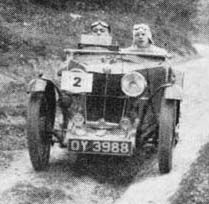
 Part 4 of this multi-part series of the MG Car Club History covers the period from 1933-1939 and the growth of the Centres. Alan Hess and ‘Mit’ Harris were the Club’s Honorary Secretaries.
Part 4 of this multi-part series of the MG Car Club History covers the period from 1933-1939 and the growth of the Centres. Alan Hess and ‘Mit’ Harris were the Club’s Honorary Secretaries.
From 1933 the Club had a regular monthly news section in two magazines, firstly The MG Magazine followed in 1935 by The Sports Car. The Club news pages were compiled by the Editors who also happened to be the Club’s Hon Secretaries at the time – Alan Hess and later F.L.M. ‘Mit’ Harris.
The following unedited extracts from these monthly reports cover the years 1933 to the outbreak of War in 1939 and illustrate in particular the growth and strength of the Centres.
May 1933: Alan Hess in The MG Magazine. The amazing rapid expansion of the MG Car Club in the last few months is a universal topic in motor club circles today. At the end of last September we had 210 members. As this magazine is closing for press we have topped the 500 mark and we are now easily the second largest one-make Car club in the world. Since January, 194 new members have enrolled and the Club has extended its activities by the formation of Scottish, Northern and Midlands Centres. Of these, the Scottish Centre is at present the best supported, having a membership of no fewer than 56. With the expansion of numbers in the Club has come, we are pleased to be able to report, a considerable increase in enthusiasm among the members. Trials and rallies are becoming much better supported with the natural result that we are fortunate enough to receive a large number of invitations from other clubs to compete in their events.
May 1933: The Club’s Half Day Chiltern Trial took place in April and afforded a number of surprises to all concerned. The competitors were surprised that two of the hills proved so stiff and the other six so easy while the officials were astonished that the competitors found six of them so easy and the other two so stiff! The critics were not justified in view of the fact that out of exactly 50 competitors a dozen got through to the finish without losing a single mark.
May 1933: The Scottish Centre’s first event took the form of a Half Day Trial. A circuit of 10 miles had to be completed twice at an average speed of 20mph. The route covered 14 miles over unmade roads while the rest of the route was on main roads. Owing to the wet weather the minor grassy roads proved really difficult and accounted for several failures while an additional feature of the test, sealed speedometers, made the circuit extremely hard. An acceleration and braking test completed the trial.
November 1933: The Northern Centre held a delightful Dinner Dance in Newcastle-on-Tyne. Dr Crosthwaite, Chairman of the Centre, was master of ceremonies, while the immensely popular and hardworking Secretary, Frank Scott, ably supported him. Mr Cecil Kimber was present and made a characteristically witty speech while the Club’s Hon Secretary, Alan Hess, also attended.
January 1934: The Midlands Centre held its first Dinner Dance in Birmingham in November and a right merry party it was! George Propert from Abingdon represented the President of the Club and the Hon Secretary of the Club, Alan Hess, was also present. In the course of the speeches both visitors paid tribute to the rapid growth of the Centre under the capable direction of Mr J. Kemp.
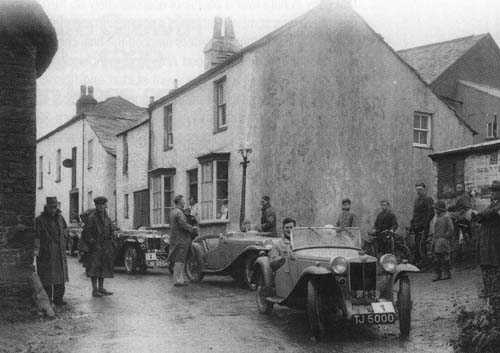
March 1934: At the Annual General Meeting of the Club, held in Hatfield, the Hon Secretary Alan Hess handed over to F.L.M. (‘Mit’) Harris.
April 1934: The Scottish Centre held an extremely sporting trial early in April over a course of approximately 85 miles. At the time there was some six inches of snow over most of the course and only seven of the 18 starters reached the final check on time.
April 1934: Another good Abingdon to Abingdon Trial was held in April and as usual the event started and finished at the Works after a sporting scramble around the principal Cotswold Hills. There was a record entry of 127 starters, of which 29 gained premier awards and 44 second class awards. In spite of fierce competition from other leading one-make clubs, MG owners featured very prominently amongst the list of winners of premier awards. A new trophy put up by Mr Cecil Kimber for the Club’s lnter-Centre competition was won by the newly formed Manchester and District Centre. Robin Mere, the Club’s Hon Trials Secretary, was in charge of the organisation and was widely complimented on the manner in which the event was conducted.
May 1934: ‘Mit’ Harris reported that the Club continues to make very gratifying progress. The recently formed Manchester and District Centre now has a membership of 73 and an attractive list of fixtures. In April the Centre held a speed trial in conjunction with the Southport Motor Club, held on Southport sands with events run over a straight mile and a five mile lap.
September 1934: In August 23 members took part in an organised visit to the Ulster TT. In view of the cost being only four guineas including all meals and transit, it is expected that there will be a larger party for a repeat trip in future years.

November 1934: A trip to Le Mans in 1935 is being planned and involves the booking of an exclusive railway sleeping car to take members to the course and to stand there in a siding as a Club HQ while the race is taking place.
November 1934: In September the Club’s Shelsley Rally and Rushmere Hill Climb was held. For the rally a total entry of 38 was received with converging routes on Shelsley for the Main Club, Scottish, Manchester, Midland and Northern Centres. On the day following the Rally, the Club’s Rushmere Hill Climb took place near Bridgenorth over a motorcycle switch back trials course. Cars ran in pairs over the 350 yards course, which defeated a number of drivers.
The Club’s car park at Shelsey Walsh in 1934
November 1934: There was an attendance of 315 at the Club’s Annual Dinner Dance held in October at the Park Lane Hotel in London with Lord Nuffield in the Chair. The gathering included representatives from every Centre of the Club and proved a very successful and enjoyable occasion. Mr Cecil Kimber was present and outlined various high spots of the past competition year.
March 1935: The Club’s Chiltern Trial was held in January, the 57 starters gathering at Lewknor, and the two principal hills were Pryton and Crowell, both of which caused a large number of failures. The course consisted of two laps of a 26 mile circuit; the two named hills were tackled twice. The Midlands Centre won the Team Award.
April 1935: This month saw the first edition of new The Sports Car magazine, which was to take over as the official journal of the Club from The MG Magazine. The editor was ‘Mit’ Harris, also now the General Secretary of the Club. With Club news now monthly in The Sports Car which would be mailed to all members, it was hoped that there would be much improved communications to members.
May 1935: At the Club’s Annual General Meeting held in London in March, the major business was to ratify the proposal that the Club should become the MG Car Club Ltd to protect the liability of members. At the same meeting it was noted that John Thornley was appointed a member of the Competitions Committee.
August 1935: The Northern Centre’s Lakeland Trial held in June was based in Keswick and started with an impromptu hill climb over the Honiston Toll road. This was a climb of about 500 yards with several acute bends, finishing at speed through a challenging narrow gateway. Competitors returned to Keswick for a lively Dinner Dance. On the following day there was a cruise on Derwent Water followed by a driving test and then a series of trials climbs. The weekend was a voted a great success.
September 1935: Some 50 members attended the first General Meeting of the MG Car Club Ltd held in lvinghoe in July. Mr Cecil Kimber chaired the meeting, which lasted only 10 minutes, after which everyone adjourned for an impromptu hill climb nearby on private ground owned by a committee member. The entry fee was 6p and everyone could have as many runs up the hill as they wished. Some 67 ascents were recorded with the fastest being the General Secretary, ‘Mit’ Harris in his P Type Midget. However amid some good humour he was disqualified when it was known that his car was supercharged!
November 1935: The club arranged an exclusive car park at Shelsley Walsh, which at a recent meeting proved extremely popular. There were 128 MGs in the enclosure and some 250 members and their guests availed themselves of the buffet in the marquee kindly sponsored by the MG Car Company.
November 1935: The Manchester and District Centre’s Cockshoot Trial in September had an entry of 47 cars. Competitors and marshals gathered on the Saturday for an impromptu dinner and party before the trial commenced on the Sunday. Heavy rain the previous week had made conditions difficult.
January 1936: The third Annual Dinner Dance of the Midlands Centre took place in Birmingham in November attended by 150 members. The Hon Sec of the centre, Frank Kemp, reported that membership was now 124 and during the past months his members has collected 26 cups, 41 premier awards, 4 team trophies and 71 other awards in open competitions.
February 1936: Over 100 members were present at the Manchester Centre’s Dinner Dance held in December. This was in spite of very severe weather including a dense fog, which prevented many members from attending. Mr Cecil Kimber arrived late because of the weather; usually travelling in his favourite N Magnette, he had to take a train which was four hours late. During the evening, tributes were paid to Lord Nuffield whose ability and generosity had enabled him to make benefactions equaling many millions of pounds. He had given young men and women of the country an opportunity to enjoy manly and healthy sports personified by the events organised by the MG Car Club.
February 1936: Associate membership of the club for those who do not drive an MG was introduced this month at 10s 6d. Associate members can later transfer to full membership (15s); while full members who sell their MG can stay with the club as associate members.
March 1936: The club’s fourth Chilterns Trial was held in January. The event was run in true winter weather and the full 57 miles of the route were extremely difficult. The 45 starters included teams from the Manchester and Midlands Centres who had to drive through fog and blizzards to reach the start in Marlow.
March 1936: The AGM of the Manchester and District Centre took place in February when an important proposal was passed. In view of the expansion of the centre (now 136 members) the Centre’s name was changed to a more representative one. Accordingly the centre became the North-Western Centre.
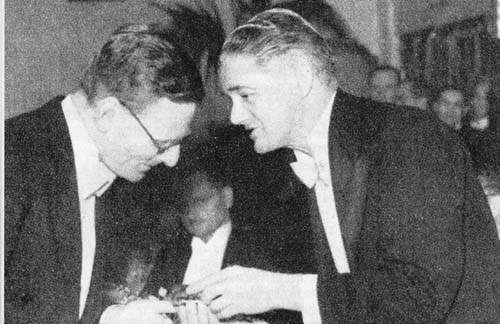
April 1936: The AGM of the club was held at the Holborn Restaurant in London in March. Amongst general business, the report and accounts showed a paid up membership of 627 and a balance of income over expenditure of £43. lt was suggested that there might be some division of the profits accruing from competitions to the provincial Centres. However as this source amounted to only £18 it was agreed that all funds should remain to increase the Club’s reserve.
May 1936: A special enclosure was reserved for members at Donington for the British Empire Trophy in April, members being able to watch the racing from their cars. Unfortunately so many members attended that the enclosure was full when Mr Cecil Kimber arrived and he had to park in the next door Talbot enclosure!
May 1936: Arrangements are going ahead for the formation of a new Centre of the Club in the Northeast. It is planned that members of the old Northern Centre will be attached to this new Centre and if possible a Newcastle Branch will be retained. The Club also sees the room for a new Centre in the west, based in Exeter, Bristol or Taunton, and local MG owners are being contacted.
June 1936: The Annual Abingdon-Abingdon Trial took place in May, starting as usual from the Factory with a running buffet provided by the company. A novelty this year was a special driving test held in the works grounds before the 110 competitors set off on a 45 mile run before the first of the trials hills.
July 1936: A meeting at the Grand Hotel in Harrogate in May saw the formation of a new North-Eastern Centre of the Club. An enthusiastic and experienced Committee was formed and the new group expects to attract a large and sporting membership.
September 1936: The newly formed Ceylon Centre held its first event in June which was a hill climb in Bandarawela. The hill, which climbs to 4000ft over three-quarters of a mile, provided some thrilling sport.
November 1936: The organisers of the Scottish Centre’s Trial held in October earnt special praise for the expert marshaling. Each driver was met at the foot of each climb by a marshal who knew exactly what had to be done because he had personally driven the climb earlier in the day.
November 1936: The Cockshoot Trial run by the North-Western Centre is now an MGCC classic event and attracting 57 competitors with entries from North-Eastern, Midlands and Main Centres. The event was based in Buxton with a Dinner Dance on the Saturday night before the trials action in the Derbyshire countryside on the Sunday.
November 1936: A meeting was held in Bath in October to inaugurate the new South-Western Centre. Some 30 members were present and Mr Cecil Kimber presided, and presented the new Centre with an annual trophy, and generously brought the assembled gathering a celebratory drink!
January 1937: ln contrast to the traditional formal black tie Club dinners, the Club’s Down-Stage Dinner held in November was an uproarious occasion. Held appropriately in the giant restaurant in London’s Zoo, 300 members gathered for an evening with a difference. Mr Cecil Kimber sportingly took the Chair and performed miracles in keeping the party in reasonable order – he blew a trombone in order to gain silence when required. The toasts were led by a group dressed as vicars drinking milk; barrow-loads of pith #####, streamers and paper hats and false noses were delivered. The cabaret was performed by a troupe of pavement artists, pit-queue performers and street musicians who were much appreciated. In closing the evening, Mr Kimber hoped that the bill for broken crockery and so forth would not be too excessive!
February 1937: The new South-Western Centre held its first trial on Boxing Day for the Cecil Kimber Trophy. The 21 starters enjoyed the challenge of local hills in wintry conditions – the route running from Bath to Bruton.
February 1937: Highlight of the North-Western Centre’s Annual Dinner Dance was the presentation of the Nuffield Gold Cup to be held for the ensuing year. The Cup (valued at £250) went to the Centre because it had been judged to show the most meritorious growth, enthusiasm and enterprise during the 1936 season.
March 1937: An editorial in The Sports Car this month reported on the problems of trials organisers imposing handicaps or bans to prevent certain cars from bagging all the principal awards. The consequence has been that regulations have been studied with great care by shrewd drivers who have driven either blown or unblown according to their views of the equity of the handicap. Now Mr Kimber has come up with a handicapping graph for the use of all trials organisers. This graph enables a fair and simple handicapping system to be evolved for any kind of test and any type of car; and will be used in the MG Car Club’s next Abingdon-Abingdon Trial. The editor commented that it was good that efficiency in terms of power output per unit of engine capacity is coming to be regarded as the prime requirement of a successful sports car. By this means, trials can serve a useful purpose.
April 1937: More than 80 were present at the first Dinner Dance of the South-Western Centre held in Bath in February. Mr Kimber spoke of the splendid progress, which the Centre had made in the short time since it came into being. He was very gratified to see the strength that the Club was gaining, with nearly 1,000 members. He was very proud to announce that more MG cars were now being exported to America than any other British car.
June 1937: The Sixth Abingdon Trial was held in May and as in previous years the course was principally in the Cotswolds. The organisers decided to make this a tough event and included the most difficult climbs providing they were not likely to do too much damage to the cars. Considering that the event was held in brilliant sunshine the number of failures was remarkable, justifying the comment that this was the toughest Abingdon yet. Results announced at the finish at the MG Works over tea showed that the MGCC had won the Team Award. It was noted that there were 16 T Types entered which showed up remarkably well.
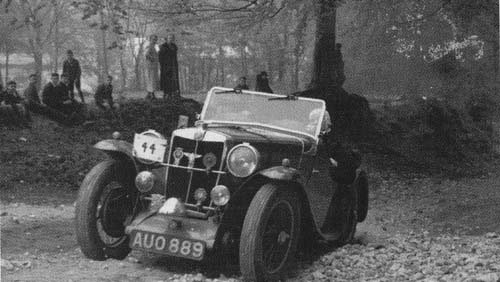
August 1938: The 24 Hour Rally organised by the North-Western Centre in June was a novel event. This appealed to owners of MGs other than trials specials and attracted an entry of 38 cars. Various driving tests were set around the route. The new T Types accounted for a dramatic rise in Club membership (now 1,450 in June) and T Type drivers took the major awards in the 24 Hour and 12 Hour classes on this event.
September 1938: The New York branch of the Club is reported as going from strength to strength with the arrival of more new MGs from the UK. Wherever members go they are questioned by motorists about the little British sports cars and they have prepared information cards that they hand out to in response to enquiries. This also gives details of the local MGCC activities.
December 1938: The South-Western Centre AGM was held in Bath in October with the Secretary, John Siddall, reporting that the Centre for the second year running was runner-up for the Nuffield Gold Cup. During 1938 the Centre’s events had not received the support that they deserved but the outlook was very good for 1939. The treasurer reported that the Centre had now been operating for two years and had nearly £25 behind them. Cash in hand and in the bank accounted to over £20.
December 1938: Once again the Club’s Annual Dinner took place at the Park Lane Hotel in London during the Motor Show and was widely described as the best party during the Show week, with some 380 members attending. Mr Kimber welcomed the special guests who included Lord Nuffield, Lord Howe, Sir Malcolm Campbell, George Eyston and Major Gardiner. Tuio Nuvolari was due to attend but was delayed reaching the UK on time. Lord Nuffield presented his Gold Cup to the North-Eastern Centre and used the occasion to make a widely reported speech about the current political situation. A truly memorable evening.
January 1939: The Midlands Centre held their Annual Dinner Dance in Birmingham in November when some 160 members and friends spent a very uproarious evening. Mr Kimber presided and said that he always associated the Midland Centre with a particularly marvellous lot of girls. He congratulated the Centre on having such wonderful sisters, wives and girlfriends – to say nothing of the feminine members. Mr J. Kemp, the Centre Secretary, responded by saying that the best reason for joining the MG Car Club was that it made you realise and understand what good fellowship really means. With the rapid development and establishment of so many overseas branches, a member would soon be able to be sure of a welcome in any part of the world, which he visited.
January 1939: The fifth Annual Dinner Dance of the North-Western Centre was held at the Mere Country Club in December. Mr Kimber and Mr George Tuck attended from Abingdon and Mr Kimber mentioned that he felt particularly at home at NW Centre parties because he spent all of his early days within a few miles of Manchester. He spoke at some length of Major Gardiner’s recent records, commenting that they were witnessed by the technical representatives of Auto Union and Mercedes who were greatly impressed. He said that it was intended to attempt 200mph on the new autobahn near Dessau in the spring.
January 1939: Scottish Centre members were in fine spirits for the Centre’s Annual Dinner dance at the Grosvenor Hotel in Edinburgh in December. Mr Kimber welcomed the 150 members and regretted that there was no tartan with an octagonal pattern – if there was he would have been in a kilt.
March 1939: The North-Eastern Centre held its annual Dinner Dance in Harrogate in February. Major Gardiner was chief guest and received an engraved silver tankard including the Yorshireman’s Coat of Arms. Centre membership was now over 150 and on display was the Nuffield Gold Cup recently presented to the Centre.
October 1939: With the outbreak of War in September, the October issue of The Sports Car was the last to be published, with a lengthy statement about the future of the Club and some interesting comments by editor and club secretary, ‘Mit’ Harris, which are reproduced below.
“With the outbreak of War the MG Car Club is in a state of suspended animation as far as Great Britain is concerned. All forthcoming events are cancelled. This decision has been taken because probably more than half the members have left their normal peacetime occupation or will be doing so shortly. News reaches us everyday of prominent members who have joined up in the forces as full-time jobs. Many officials from the centres have joined up but their records are being kept and their trophies, for example, guarded by the Club headquarters (the magazine office in Holborn, London)”.
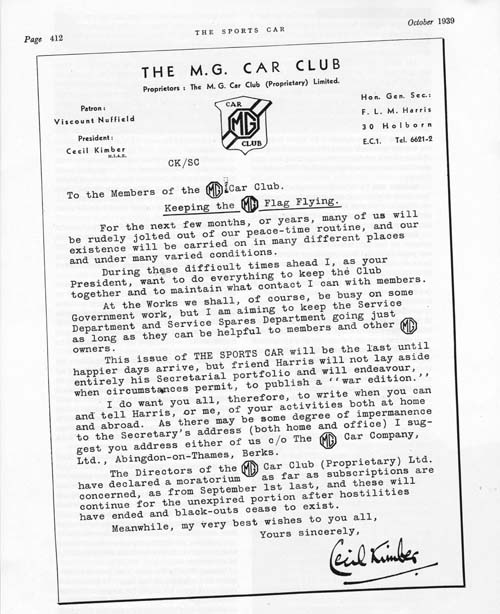
NAMGAR would like to thank Andy Knott, Editor, Safety Fast! for his kind permission to reproduce these articles.


Comment by: Philip Jay
Please can you let me know if you have any more information regarding Mr K.G. Marsh who received the’ Premier Award’ in 1934. I have been looking after his pewter tankard for over 32 years!!!